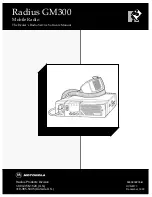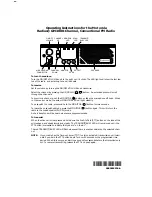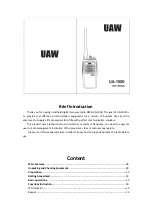
3
DC Power Cable Connection
♦
Mobile Operation
The vehicle battery must have a nominal rating of 12V. Never connect
the transceiver to a 24V battery. Be sure to use a 12V vehicle battery
that has sufficient current capacity. If the current to the transceiver is
insufficient, the display may darken during transmission, or transmit
output power may drop excessively.
1.
Route the DC power cable supplied with the transceiver directly to
the vehicle's battery terminals using the shortest path from the
transceiver.
•
If using a noise filter, it should be installed with an insulator
to prevent it from touching metal on the vehicle.
•
We recommend you do not use the cigarette lighter socket as some
cigarette lighter sockets introduce an unacceptable voltage
drop.
•
The entire length of the cable must be dressed so it is isolated
from heat, moisture, and the engine secondary (high voltage)
ignition system/cables.
Locate the power input connector as close to the transceiver as
possible.
Note:
2.
After the cable is in place, wrap heat-resistant tape around the
fuse holder to protect it from moisture and tie down the full run of
cable.
3.
To prevent the risk of short circuits, disconnect other wiring from
the negative (-) battery terminal before connecting the transceiver.
4.
Confirm the correct polarity of the connections, then attach the
power cable to the battery terminals; red connects to the positive (+)
terminal and black connects to the negative (-) terminal.
•
Use the full length of the cable without cutting off excess
even if the cable is longer than required. In particular, never
remove the fuse holders from the cable.
5.
Reconnect any wiring removed from the negative terminal.
6.
Connect the DC power cable to the transceiver's power supply
connector.
•
Press the connectors firmly together until the locking tab
clicks.
Red
Black
Summary of Contents for DV 2055 Series
Page 1: ...DV 2055 2066 2135 2400 Series Mobile Radio...
Page 2: ......
Page 21: ......
Page 22: ...A6 161220...








































